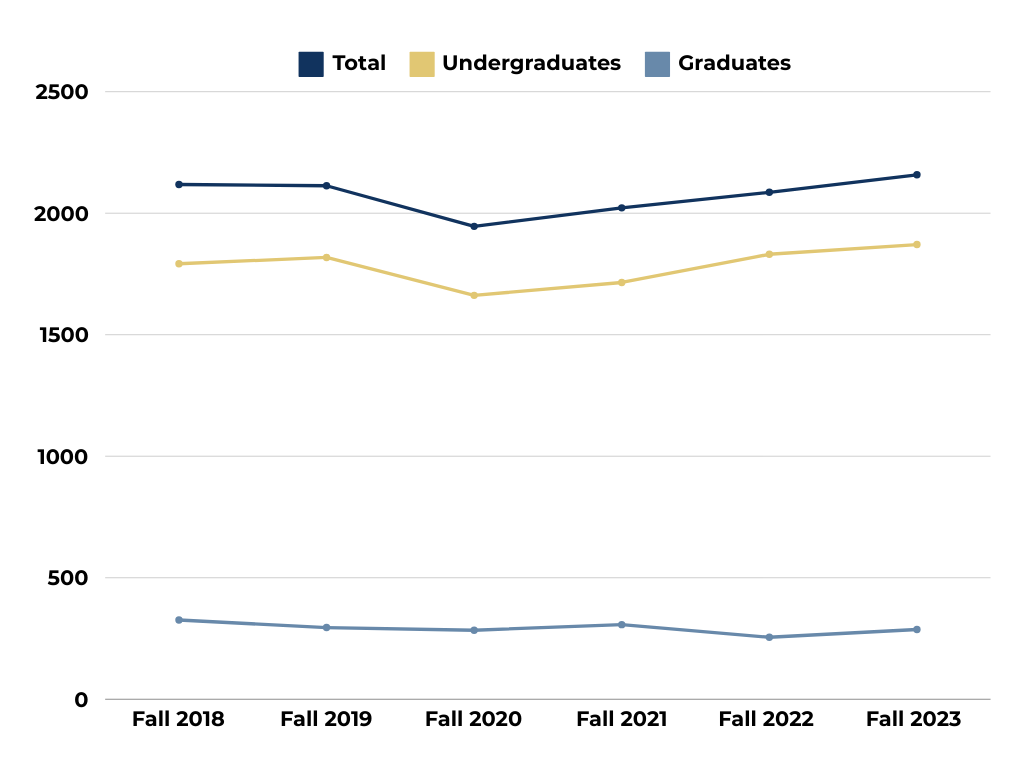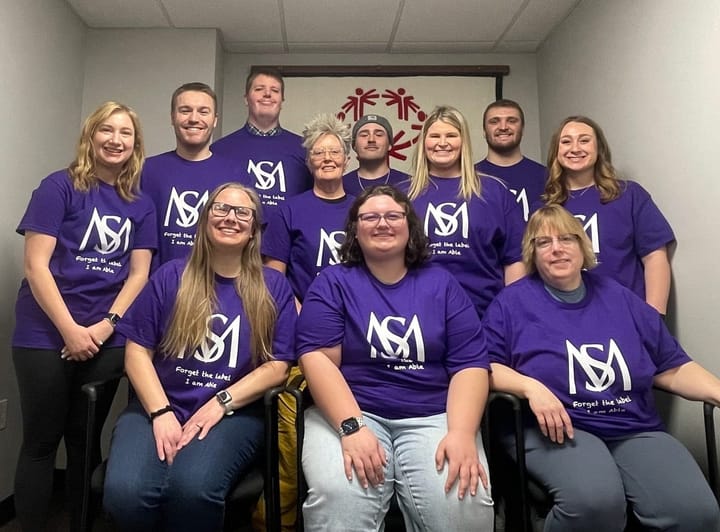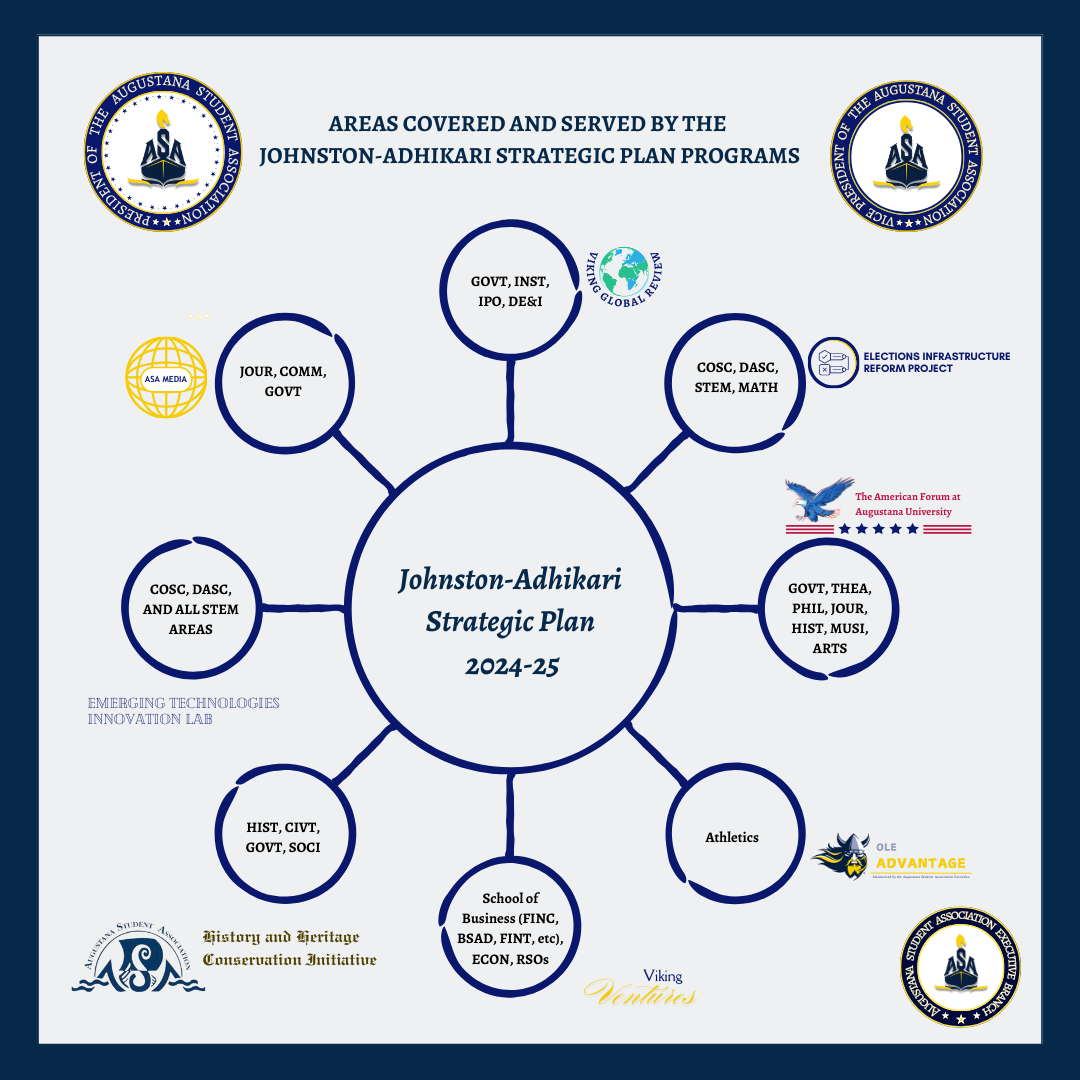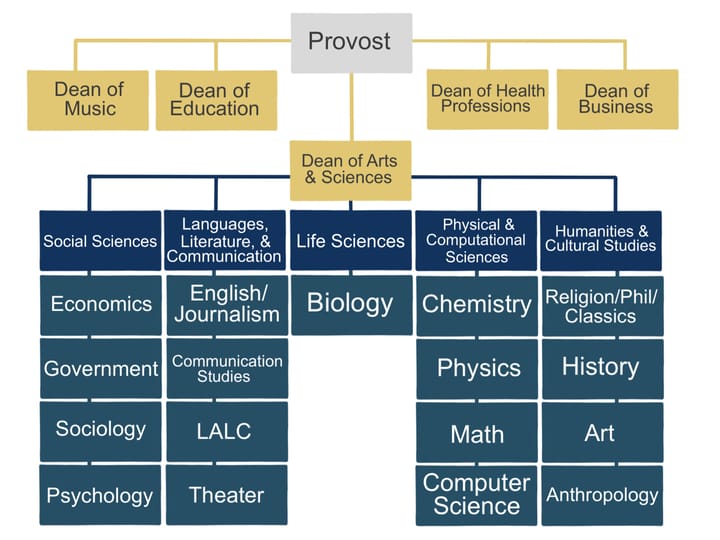Viking Bold grows scholarship opportunities, total enrollment

This is the seventh and final part of a continuing series on Viking Bold.
The enrollment and strategic scholarship pillar of Viking Bold — Augustana’s ten-year strategic plan — aims to increase undergraduate and graduate enrollment and maintain Augustana’s affordability by increasing the amount of endowed scholarships for students.
Part I of the pillar outlines a goal to enroll over 3,000 total students and provide a welcoming and inclusive environment. In order to achieve this goal, President Stephanie Herseth Sandlin said Augustana aims to maintain an undergraduate population of approximately 2,200 students, so as to not change the fundamental nature of the campus community.
“We want to grow enrollment in a way that I think is ambitious yet responsible,” Herseth Sandlin said.
The remaining 800 students would be graduate students in programs such as the Master of Business Administration program or Doctor of Physical Therapy program.
According to Adam Heinitz, associate vice president of enrollment management, the total student population in fall 2023 was 2,158, the largest since 1979. Additionally, Heinitz said the university is on track to achieve its 2030 enrollment goal given the increasing undergrad population, growth of Sioux Falls, enhancements to campus and introduction of graduate programs.
“We feel good about that [headcount], very confident that that number will increase in the fall of 2024,” Heinitz said.
Heinitz said there are several reasons for the upcoming increase in the undergraduate population. The incoming freshman class will be larger in size than the graduating senior class, leading to a net gain in students, and the university will enroll a second cohort of the DPT program.
However, enrollment will become trickier as the upcoming demographic and consumption cliffs begin, Herseth Sandlin said.
The demographic, or enrollment, cliff describes a sharp decrease in the number of traditional college-aged students starting in 2025. This means that higher education institutions will have to compete more aggressively for prospective students. This is happening at a time where fewer 18-24 year olds are choosing to go to college in what is known as the consumption, or demand, cliff.
“Yet unlike a lot of other colleges and universities, our trajectory is going in the right direction,” Herseth Sandlin said.
According to Herseth Sandlin, offering competitive financial aid awards and introducing prospective students to the academic programs they want to invest in for their own professional preparation position Augustana nicely.
Heinitz said some current enrollment strategies include face-to-face interactions with prospective students, targeting students in the Sioux Falls area and growing Augustana’s brand across the globe. The admissions team held visit events for 1,500 sophomores in April and several hundred middle schoolers throughout this academic year.
Senior Megan Richardson has worked as a student ambassador since June 2021 and said she has seen Augustana’s efforts to connect with prospective students.
“Just getting people on campus is more of a priority that I’m seeing more versus people seeking out Augustana as a college,” Richardson said. “They’re kind of putting themselves in front of prospective students when they’re thinking about colleges.”
Part 2 of the enrollment and strategic scholarship pillar focuses on making an Augustana education affordable and accessible for more students by focusing on innovative scholarship partnerships.
According to Augustana’s website, direct costs for the 2024-2025 school year will total $49,880; however, Heinitz said most private universities operate under a “higher sticker price, high discount rate model,” meaning tuition costs are offset by scholarships and financial aid opportunities.
Heinitz said Pell Grant eligibility is one such financial aid opportunity.
“We have a launch AU program for students who qualify for Pell, which kind of guarantees them that between their federal, state and Augustana scholarship grants their tuition will be covered,” Heinitz said.
Another focus for affordability is placed on endowed and impact scholarships. Endowed scholarships stem from relationships the university has built over the years with alumni and friends.
According to Pamela Homan, chief strategy officer and executive vice president, the university manages around 600 endowed scholarships. Homan said that since the beginning of Viking Bold, the monetary amount of endowed scholarship has increased by more than $25.95 million.
“They’ve seen the wonderful success of our graduates, and they want to be a part of that and to continue to sustain and grow it,” Homan said.
According to Homan, every endowed scholarship starts with a principal investment of at least $25,000, which is invested. Twelve months after the principal amount is invested, 5% of its earnings are then available to be given as an endowed scholarship.
Homan said the principal amount never diminishes, but if a strong market year causes the investment to make more than 5% interest, everything over that 5% is reinvested to the principal to grow the base of the scholarship.
Additionally, donors can identify how much they are giving and the eligibility criteria.
Sophomore Ike Snustad is a recipient of two endowed scholarships, and he said the scholarships have made college more affordable for him.
“I try not to take loans out from private loan services because the interest rates are crazy, so having these endowed scholarships help keep me in a financially stable place,” Snustad said.
Phase I of the pillar’s second part aims to establish additional creative scholarship opportunities, such as impact scholarships, like the Buntrock Scholars Program, and programs like Journey Scholars. According to Homan, impact scholarships are best understood as “money in, money out” — the money donated to the scholarship is given in its entirety every year.



